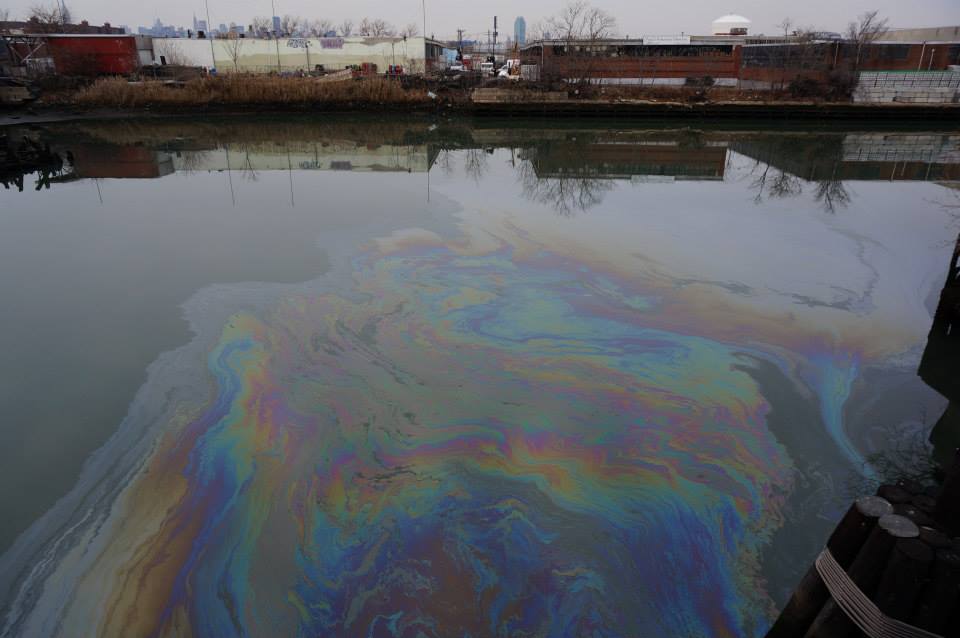
On a Thursday evening in May, community members of Greenpoint, Brooklyn were invited to learn how to identify oil spills in their neighborhood. The event, “Oil Spills 101’’, was hosted by the Newtown Creek Alliance and held at Kingsland Wildflowers at Broadway Stages. Oil Spills 101 was put together not only to inform people how to spot oil spills but also, how to effectively report spills to authorities, what techniques are used to clean up oil, and how New York City Agencies handle these emergencies.
Before the event kicked off, those who arrived early were urged to explore the fourth and fifth rooftop gardens. Paved with stone walkways, the gardens are a lush oasis against the surrounding urban infrastructure and skyline. After exploring the gardens, participants returned to the fourth floor, where about a dozen people settled into fold out chairs and were offered a choice of vanilla or carrot cake. Shortly after, Randy Austin, Chief of the Spill Response Program at the NYS Department of Environmental Conservation, arrived with a briefcase full of oil samples for the presentation. While Austin set up the slideshow, he explained that this course would help the community ‘‘better understand what’s going on down at Newtown Creek.’’

In one year, the NYS Department responded to 16,000 confirmed incidents of oil spills, ninety percent of which was petroleum based product. Although many spills are small enough to be cleaned up by the Spill Response Program, an larger spill could cause significant damage to the quality of waterways and the area’s wildlife. Newtown Creek is one of the natural waterways that has been affected by pollution, in the past the creek suffered from a 17-30 mgs underground oil spill. Part of Newtown Creek Alliance’s mission is to revitalize the creek’s ecosystem and stop the creek from being further polluted.
‘‘It’s sticky, tarry, nasty stuff.’’ Austin said as he showed a slide of coal sheen polluting water. He then went over all the different signs of a spill that an individual can detect in their neighborhood, whether in Newtown Creek or the subway station. One key warning sign is a rainbow sheen or oil slick seen on the water. Rainbow sheen in a water way is a clue that someone recently dumped oil or another harmful substance into the water.
The last sign Austin went over was “Fish Kills”. When baby bluefish chase bigger fish into shallow water and the fish die due to lack of oxygen, it is referred to as a “Fish Kill”.
As the presentation finished up, Austin explained who to call and what to say when an oil spill is spotted in your neighborhood. His advice is to immediately call the U.S. Coast Guard, NYS Department of Environmental Conservation, or a New York City Department of Environmental Production. Austin reminded the group to note the date, time, and location of a possible spill in order to get the most effective response. As chief of the Spill Response Program, Austin enjoys being able to give these presentations and provide the tools for spotting oil spills. “We rely on the community,” he said, recalling the importance of community engagement, ‘‘People may not know what’s going on, and fear the worst, and I try to educate them on how to identify this stuff.’’



